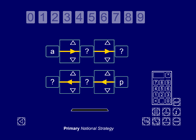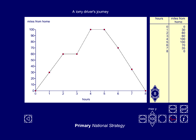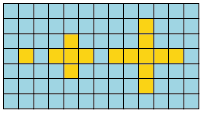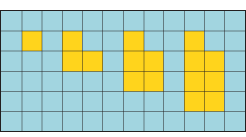Consolidation and practice
These resources are to support children in guided or independent work. Roll over the highlighted resources for a description.
Visit the nrich website  for further activities to support practice and application.
for further activities to support practice and application.
Function blocks

This interactive teaching program (ITP) is an ICT-based tool to support the exploration of calculation and inverses. Function blocks ITP allows the child or teacher to display and explore the effect of up to three operations on a starting or finishing number. The keypad can be used to input decimal numbers, and two rows of function machines can be displayed to compare the effect of using different input values, order or type of operations.
Line graph

This interactive teaching program (ITP) is an ICT-based tool to support the exploration of handling data. Line graph ITP allows the child or teacher to enter data into a table or select from existing data sets and then create a line graph to represent the data. Data and values on axes can be changed to explore the impact on the graph.
Opportunities to use and apply
Possible contexts include:
- Word problems, e.g. for every £20 you spend at a supermarket you get a voucher for school equipment. How much do you need to spend to get 1 voucher; 2 vouchers; 7 vouchers; 100 vouchers; m vouchers?
- Investigations, e.g. write an expression to describe the number of squares in the 1st; 2nd; 3rd; 5th; 10th; nth shape?

- Using function machines, e.g. creating algebraic expressions to describe the relationship between input and output.
- Conversion and line graphs, e.g. interpreting a temperature conversion chart to create an expression describing the relationship between Celsius and Fahrenheit.
Confirming learning
Ask probing questions such as:
- Two numbers x and y have a product of 32 and a sum of 12. Write two equations that are true for x and y. Find the values of x and y and explain how you did this.
- Roast beef needs to be cooked for 30 minutes for each kg of weight plus an extra 20 minutes. Write this relationship as an algebraic expression. What cooking time is needed for a joint of beef that weighs 1 kg, 2 kg, 4 kg, 7 kg, n kg?
- Describe how the pattern is growing and record this in a table. Use this to help you write an expression for the nth pattern in this sequence.

 Counting and understanding number and associated objectives
Counting and understanding number and associated objectives



